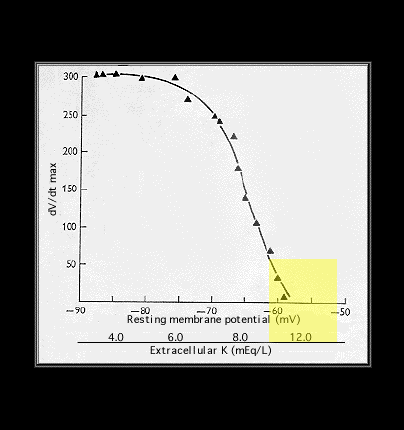
At extracellular K levels above 10 mM, dV/dt max is very depressed, and conduction velocity is very slow. P waves are no longer visible on the electrocardiogram and the QRS complex is very prolonged. Ventricular fibrillation or asystole invariably occurs and the patient dies.
